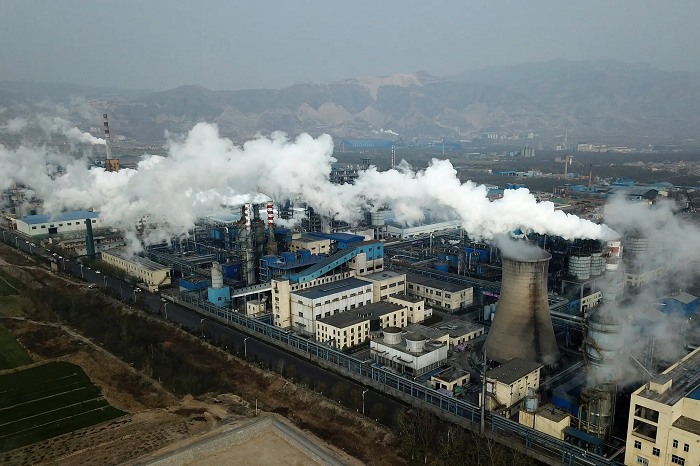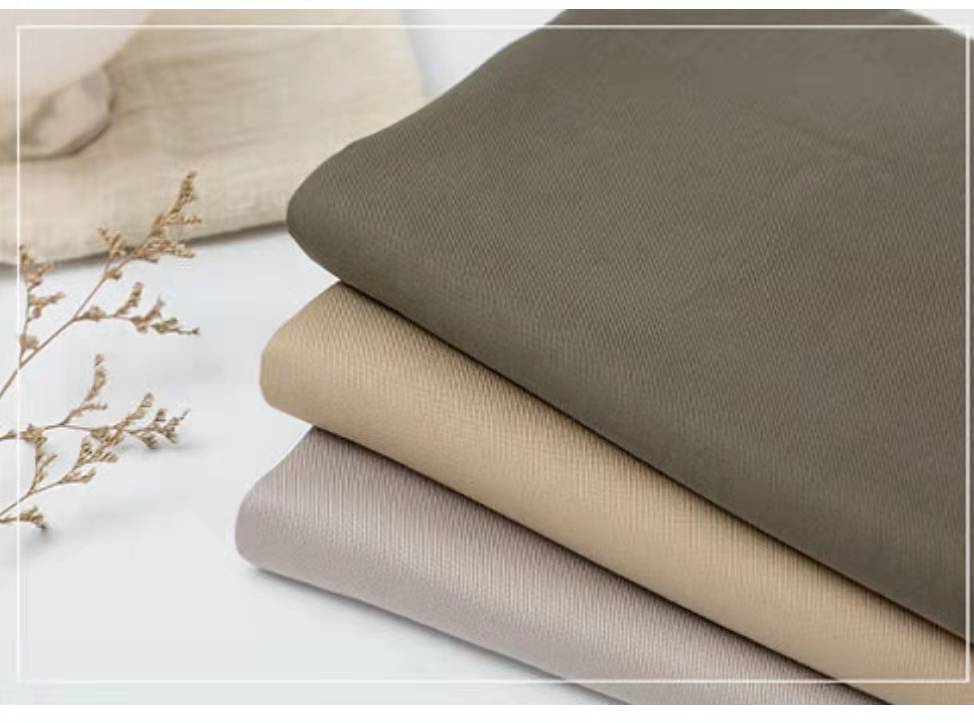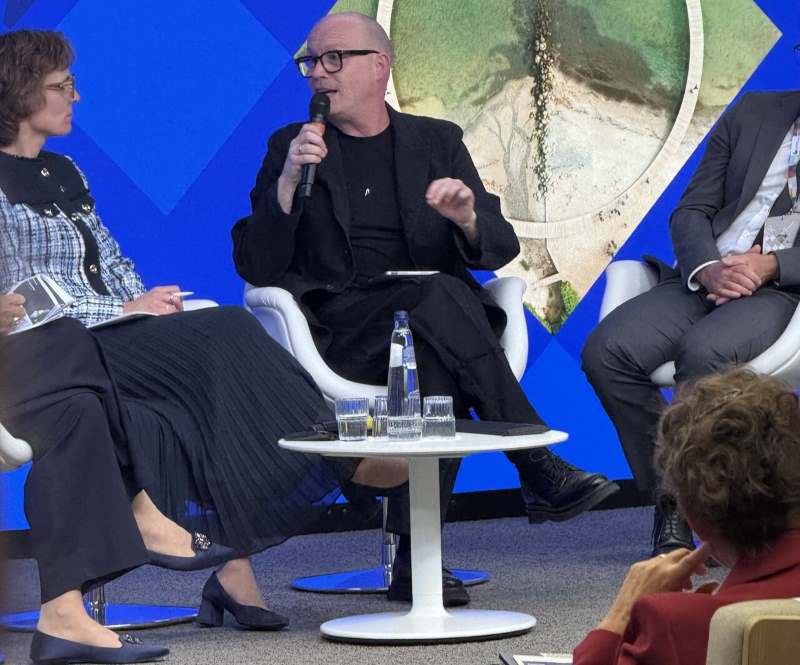FW

Denim mills using Monforts systems dominate eco-focused fabric displays
At the recent Kingpins Amsterdam exhibition held on April 16-17 at the Sugar Factory, Monforts customers took centre stage with their advanced, sustainable denim offerings. Eight of the ten fabrics highlighted in the 2025 Most Sustainable Product (MSP) showcase were developed by companies using Monforts resource-efficient technologies, underlining the machinery manufacturer’s strong influence in driving denim innovation.
These mills - Arvind (India), Diamond Corduroy (Pakistan), Isko and Orta (Turkey), Naveena Denim (Pakistan), Saitex (Vietnam), Soorty (Pakistan), and Textil Santanderina (Spain) utilise equipment such as the Montex stenters, Monfortex shrinking ranges, ECO LINE finishing systems, and Thermex dyeing ranges. “Monforts Montex stenters are the industry standard in denim finishing,” said Hans Wroblowski, Monforts Head of Denim.
He noted that over 900 Monforts Thermex dyeing systems are operational globally, many dedicated to denim production. Innovations such as multifunctional spray coating, thermo-stretch, and skew technologies are helping customers achieve more efficient production and higher energy savings.
Students explore stretch denim innovation
A highlight of Kingpins 2025 was the 'Stretch Yourself' exhibition, a collaborative design project led by the House of Denim Foundation’s Jean School, the world’s only dedicated denim education institute. Thirty students created garments using fabrics from seven Monforts customer mills: Bossa, Calik and Orta (Turkey), Naveena and Soorty (Pakistan), DNM Denim (Egypt), and Advance Denim (China). The project was developed in partnership with The Lycra Company.
“We started with an educational segment on sustainability and innovation and then let the students design freely,” said Mariette Hoitink, co-founder of the House of Denim. The students’ unconventional take on stretch denim highlighted the creative potential of the innovative fabrics provided by the participating mills.
Cellulosic fibres gain ground in denim
While cotton remains the dominant fibre in denim, cellulosics like Lenzing’s Tencel and Ecovero are gaining traction for their soft hand feel and sustainable profile. At Kingpins, Lenzing Hong Kong presented its Application Innovation Collection 25, developed in collaboration with mill partners. This collection featured a variety of sustainable denim styles from Monforts customers including Advance Denim, Naveena, Soorty, TCE Jeans (Vietnam), and US Denim Mills (Pakistan).
“Our team continues to engage with supply chain partners and global brands to drive trend developments,” said Dennis Hui, business development manager at Lenzing Hong Kong. The featured outfits demonstrated varied wash effects tailored to brand expectations and sustainability standards.
Technology enabling greener denim production
Monforts Eco Line range concepts continue to support the production of high-quality, reproducible denim fabrics while enabling gentler processing of sensitive fibres. Their ‘double rubber’ version integrates two compressive shrinkage units and two felt calenders in line, ideal for elastic and bi-elastic materials. The ThermoStretch unit allows combined drying, stretching, and skewing functions, and when combined with the EcoApplicator, ensures minimal chemical usage.
Monforts customers are also adopting the Econtrol and Econtrol TC-A continuous dyeing processes, allowing one-step dyeing and drying of cotton, cotton blends, and cellulosics like Tencel. These methods fix dyestuffs in just 2-3 minutes using controlled steam and air at 120-130°C, drastically improving energy and water efficiency.
“Many of our denim customers are using our existing technologies within integrated finishing mills to enhance their ecological performance,” Wroblowski added. “We continue to collaborate with them on innovative projects that shape the most progressive denim styles seen at Kingpins exhibitions worldwide.”

Bangladesh's RMG export is adapting to India's revocation of trans-shipment services, marked by maiden freighter flight carrying 60 metric tons of RMG for Inditex from Sylhet's Osmani International Airport. This move towards increasing independent air cargo capabilities comes as the industry grapples with the commercial impact of higher transportation costs while recognizing the critical need for lead time control in the fast-paced fashion world.
India's April 8 decision to halt Bangladesh's access to its land, sea, and air logistics network cited congestion and rising costs within its own infrastructure due to the volume of Bangladeshi exports. This abrupt change forced Bangladesh to fast forward its plans for self-reliant air freight options.
Previously, the trans-shipment route through India was a cost-effective, albeit sometimes time-consuming, for many exporters, especially those located closer to the border. Data from the Bangladesh Freight Forwarders Association highlights this reliance: between January 2024 and March 2025, 18 per cent of Bangladesh's garment air cargo, amounting for over 34,900 metric tons valued at $462.34 million, utilized Indian airports, primarily Delhi and Kolkata.
The dual commercial impact
The immediate commercial impact of the trans-shipment ban has been an increase in transportation costs. As Wenwen Zhang of Xeneta pointed out, air freight spot rates from Bangladesh to Europe rose 12 per cent in the week ending April 20, directly linked to the removal of the Indian transit option. This rise poses a challenge to Bangladeshi apparel manufacturers, who operate in a highly competitive global market with tight margins.
However, the increased expenditure must be weighed against the crucial need for lead time control, particularly in the fast-fashion sector. Retail giants like Inditex operate on tight schedules, requiring rapid delivery of goods to meet consumer demand and adapt to evolving trends. Air freight, while more expensive than land or sea trans-shipment, offers faster transit times ensuring that garments reach their destination quicker. In fact, Inditex's utilization of the inaugural Sylhet-Zaragoza freighter flight exemplifies this trade-off. While air freight incurs higher costs compared to previous trans-shipment methods, the ability to directly ship 60 tons of RMG to Spain ensures reduced lead time. This speed is paramount for Inditex to maintain its agile supply chain and respond swiftly to market demands. This decision suggests that for time-sensitive shipments and key markets, the benefits of faster delivery outweigh the increased transportation expenses.
Table: Bangladesh's RMG exports via Indian airports (Jan 2024 - Mar 2025)
|
Metric |
Value |
|
Volume (Metric Tons) |
34,900+ |
|
Value (USD Million) |
462.34 |
|
Percentage of Air Cargo |
~18% |
|
Primary Transit Points |
Delhi, Kolkata |
|
Number of Countries |
36 |
Efforts to mitigate cost impacts
Recognizing the cost implications, the Bangladeshi government anticipates that the new air freight initiative will eventually lead to a reduction in air freight costs to Europe by up to 13 per cent. This projected decrease is crucial for the long-term viability of direct air cargo routes. Incentivizing more airlines to operate from Bangladesh's airports, as urged by the BGMEA, is another strategy to increase competition and potentially drive down freight rates.
The ongoing upgrades to airport infrastructure, such as that in Sylhet and the planned resumption of cargo flights from Chattogram, are essential steps in building a robust and potentially more cost-effective air cargo ecosystem within Bangladesh.
The broader global trade environment adds another layer of complexity to the cost equation. Fluctuations in fuel prices, insurance costs, and potential shifts in demand due to tariff changes can all influence air freight rates. While the potential for increased air freight capacity due to changes in US-China trade dynamics could offer some relief in the long run, the immediate focus for Bangladeshi exporters is managing the current cost increase while capitalizing on the speed and reliability of direct air cargo.
The revocation of India's trans-shipment services has undeniably created a commercial challenge for Bangladesh's apparel exporters with higher transportation costs. However, the proactive development of direct air cargo routes, as demonstrated by the Sylhet initiative and Inditex's participation, highlights a strategic move towards prioritizing lead time control – a critical factor in the fast-fashion industry. The long-term commercial impact will depend on the success of government and industry efforts to optimize air cargo operations, attract more carriers, and potentially negotiate more favorable rates. The balancing act between managing increased expenses and ensuring timely delivery will be a defining factor in the future competitiveness of Bangladesh's apparel exports.
The fashion industry, built on trends and textiles, is facing a stark reality: its environmental footprint is unsustainable. Hidden deep within its complex supply chains, specifically in the often-overlooked Tier II suppliers lies a significant source of carbon emissions. However, a recent McKinsey & Company report, ‘Sustainable Style: How Fashion Can Reduce Tier 2 Emissions’ offers a glimmer of hope, revealing that decarbonizing this crucial segment might be surprisingly affordable.
The hidden cost of fabric and finishing
Tier II suppliers, including fabric mills, dyeing facilities, and finishing plants, are responsible for 45 per cent to 75 per cent of a garment's total carbon emissions. This is where raw materials are transformed into usable textiles, a process that often involves energy-intensive processes powered by fossil fuels.
As experts point out, many brands focus on their direct suppliers, Tier I, which are the garment factories. But the real impact lies further upstream, in the Tier II, where the energy-intensive processes of fabric production and finishing take place. The report highlights the following:
Table: Carbon emission distribution in a typical garment supply chain
|
Supply chain tier |
Estimated carbon emission contribution |
|
Tier I (Garment Factories) |
25% - 55% |
|
Tier II (Fabric Mills, Dyeing, Finishing) |
45% - 75% |
|
Tier III+ (Raw Material Extraction, Agriculture) |
Variable, Significant |
The 1 per cent solution
The most striking finding of the McKinsey report is the feasibility of decarbonization. It suggests that implementing sustainable practices in Tier II, such as switching to renewable energy sources, improving energy efficiency, and adopting low-impact dyeing techniques, would translate to a mere 1 per cent increase in the Cost of Goods Sold (COGS) per item. "This is not a prohibitive cost," states the report. "It's a manageable investment that can lead to significant environmental benefits without drastically impacting consumer prices."
Indeed, the 1 per cent figure is encouraging however the report does acknowledge the challenges. The fragmented nature of the Tier II supplier base, with numerous small and medium-sized enterprises (SMEs), requires collaborative efforts from brands, suppliers, and policymakers. Access to financing, technological know-how, and standardized measurement methodologies are also crucial.
The report also highlights significant opportunities. Brands can leverage their purchasing power to incentivize suppliers, invest in capacity building, and establish transparent supply chain traceability. Governments can implement supportive policies, such as carbon pricing and renewable energy subsidies.
A collaborative approach
Experts say, this is not a problem that any single player can solve. It requires a collective effort, a systemic shift in the way we produce and consume fashion. Of course, the 1 per cent solution offers a tangible pathway towards a more sustainable fashion industry. By embracing collaborative partnerships, investing in innovative technologies, and prioritizing transparency, the industry can stitch together a future where style and sustainability go hand in hand. The report's findings are not just a call to action; they are a blueprint for a more responsible and resilient fashion ecosystem.
Over 16.6 million sq ft of new Grade A mall space is expected to added in India’s top seven cities between 2025 and 2026, according to a new report by real estate services firm Anarock.
This rise in retail space will be led by Hyderabad and Delhi-NCR, which will together account for 65 per cent of the upcoming supply, signaling a growing focus on high-growth consumption hubs. This development is part of a broader retail pipeline projected to add more than 40 million sq ft of mall space across key urban centers by 2029.
This surge in development is largely driven by a shortage of new Grade A mall supply in recent years, says Anuj Kejriwal, CEO & Managing Director, Anarock Retail. In 2022, only 2.6 million sq ft of new supply entered the top seven cities, while leasing hit 3.2 million sq ft Similarly, in 2023, 5.3 million sq ft of retail space was added, compared to 6.5 million sq ft. leased.
The gap widened further in 2024 due to delays in project approvals during India’s general and state elections. Just 1.1 million sq ft of new Grade A supply was added during the year, while leasing remained strong at 6.5 million sq. ft.
Despite the potential for oversupply, mall leasing across the top seven cities will exceed 12.6 million sq ft over the next two years, estimates Anarock. This will be driven by robust consumer demand and the entry of over 60 international brands across fashion, electronics, lifestyle, and F&B since 2020.
Mall vacancy rates are expected to decline to 8.2 per cent in 2025 and 8.5 per cent in 2026, from 15.5 per cent in 2021.
Beyond metros, Tier II and Tier III cities are emerging as key retail growth markets due to rising disposable incomes and greater digital penetration. E-commerce adoption has soared in these areas, now accounting for 65 per cent of online shopping, and is expected to maintain its lead through FY 2030.
Having doubled from 140 million in 2020 to 260 million in 2025, India’s online shopper base is forecast to reach 700 million by 2035.
Bangladesh's ready-made garment (RMG) exports to key markets including the United States, the United Kingdom, and Europe experienced significant growth during the first ten months of FY25 spanning July-April 2024-25.
Compiled by the Bangladesh Garment Manufacturers and Exporters Association, data from the Export Promotion Bureau (EPB), shows, Bangladesh's RMG exports increased by 10 per cent to $32.64 billion during July-April’24-25 as against $29.67 billion recorded during the same period in FY24.
Apparel exporters attribute this sustained growth to the increasing demand from prominent brands and retailers, which has maintained momentum despite recent political instability.
Bangladesh’s largest market, EU’s RMG imports increased by 10.55 per cent to $16.25 billion during the July-April 2024-25 period. The country’s exports to the EU accounted for nearly half (49.78 per cent) of Bangladesh's total RMG earnings.
Demonstrating a stronger growth, the United States registered a 15.75 per cent rise to $6.22 billion in RMG imports from Bangladesh during the ten-month period as against $5.38 billion in the same period of FY24. Earnings from the US constituted 19.09 per cent of the total revenue.
Growth in the UK market remained modest at 3.41 percent with RMG imports from Bangladesh totaling $3.63 billion, compared to $3.5 billion in July-April FY24. Bangladesh’s exports to Canada also grew by 13.86 per cent, to $1.05 billion, as against $924.7 million in the same period last year.
Among EU nations, Germany continued to be the top destination for Bangladeshi garments, importing $4.08 billion worth of RMG products in July-April FY25. Following Germany were Spain ($2.85 billion), France ($1.78 billion), the Netherlands ($1.72 billion), Poland ($1.37 billion), and Italy ($1.27 billion). While the US, Canada, the UK, and the EU are considered traditional markets, non-traditional markets also showed positive growth, increasing by 6.25 per cent to $5.48 billion, from $5.16 billion in the FY24 period. These markets now represent 16.79 per cent of Bangladesh’s total RMG exports. Japan led the non-traditional markets with imports of $1.02 billion, followed by Australia ($688.23 million) and India ($563.81 million). Notably, exports to Turkey and South Korea also saw significant earnings, reaching $387.46 million and $369.70 million, respectively.
However, Faruque Hassan, Former President, BGMEA, cautions, growth might remain negative in the coming months due to concerns over new US tariffs, which have reportedly led to a slowdown in orders. The government needs to engage in negotiations and diplomatic efforts regarding these tariffs, he emphasizes.
Mohiuddin Rubel, Former Director, BGMEA, suggests, the ongoing global trade conflicts may present new opportunities for Bangladesh to focus on non-traditional markets, product diversification, and innovation. In FY24, Bangladesh exports RMG products worth $38.48 billion.
A significant rise in cotton farming in Telangana during the 2025 Kharif season is boosting demand for high-quality cotton seeds. Farmers returning to cotton due to promising market returns, have expressed concerns over the ability of these seeds meeting the anticipated need.
Traditionally constituting over 40 per cent of the total planted area in the state, Cotton is preferred for its ability to thrive in Telangana’s climate and soil. Furthermore, strong market demand has driven this increase, with cotton fetching attractive prices of $96 to $168 per hundredweight in previous seasons.
With cotton cultivation expected to expand beyond 5.06 million acre, the demand for quality cotton seeds has skyrocketed. Officials estimate, over 107 million packets of cotton seeds are needed to support the planned expansion.
However, the overall availability of cotton seeds is only about half of the projected requirement according to sources. This has raised concerns about whether farmers will have access to enough seeds before planting begins in late May. Officials claim that efforts are underway to make 240 million packets (15.87 ounces each) of cotton seeds available. However, logistical challenges and market supply limitations pose obstacles.
In the past, shortages in certain districts have allowed private sellers to take advantage of farmers by charging inflated prices. With demand at its peak, growers are worried about whether the government will step in decisively to ensure timely availability or allow private traders to dominate the market once again.
The presence of fake seeds in the market would be a major problem. This can only be addressed by having sufficient stock available by the end of May. The presence of Cotton Corporation of India (CCI) purchasing centers in key districts like Adilabad and Mahabubnagar is expected to help ensure fair market access.
Union Textile Minister Giriraj Singh advocates blending o milkweed fibers with traditional materials
Speaking at Rajendra Prasad Central Agricultural University (RPCAU) in Pusa, Samastipur, Union Textiles Minister Giriraj Singh advocated for the blending of milkweed fibers with traditional materials like polyester, wool, viscose, and cotton, emphasizing the potential to create high-quality textiles.
This innovative approach could address the nation's rising demand for alternative fibers, aligning with Prime Minister Narendra Modi’s vision for a self-reliant India, Singh emphasized.
On being combined with other factors, milkweed significantly improves fabric warmth, breathability, and softness, making it an ideal choice for premium, comfortable clothing, he added. He further suggested, with proper development, milkweed fibers could even surpass the renowned Kashmiri ‘pashmina’ in quality and versatility.
Currently, the Bihar Government is conducting an extensive research on milkweed production and its applications in the textile industry. Northern India Textile Research Association (NITRA) park is also establishing processing and testing facilities to support the development of this promising fiber.
To boost the agro-textile sector, the National Technical Textile Mission and RPCAU plan to sign an MoU to help increase the farmers' incomes and accelerate the growth of agro-textiles.
PS Pandey, Vice Chancellor, RPCAU added, a dedicated agricultural research center will soon be established at the university, further reinforcing the integration of technical textiles in agriculture and supporting India's drive towards self-sufficiency in fiber production.
The US House Ways and Means Committee has introduced a key provision in its budget reconciliation bill to permanently end de minimis access for commercial shipments from all countries by July 1, 2027. The move has drawn strong support from the National Council of Textile Organizations (NCTO), which represents the entire US textile value chain from fiber to finished goods.
NCTO President and CEO Kim Glas praised the committee's leadership, particularly Chairman Jason Smith (R-MO) and Rep. Greg Murphy (R-NC), for acting on what she described as a ‘destructive loophole’ that has long harmed US textile manufacturers and facilitated the entry of illicit goods, including narcotics such as fentanyl, into the country.
De minimis rules currently allow low-value shipments to enter the US duty-free and with minimal customs inspection. According to Glas, nearly four million such shipments enter the US each day, many of which are unregulated and pose safety and security risks.
While commending the proposed 2027 deadline, NCTO is urging lawmakers and the administration to expedite the timeline. Glas noted that express shippers have already adapted their logistics operations, especially for Chinese imports, and are well-positioned to meet new enforcement standards.
Glas also acknowledged the Trump administration’s earlier action to exclude Chinese goods from de minimis benefits, noting that China accounts for about two-thirds of all such shipments. She called on the Biden administration to use executive powers to immediately close the loophole for all countries, pending congressional action.
The legislation is expected to be marked up by the committee soon as it moves through the legislative process.
Strafe Outerwear, known for its innovative mountain gear, has launched its first-ever down jacket the Palisade Down Insulator ahead of Fall/Winter 2025-26. This new piece blends high performance with deep sustainability commitments through partnerships with Pertex, NetPlus, and Allied Feather + Down.
Designed as a versatile layering piece, the Palisade offers lightweight warmth and durability. It features NetPlus recycled nylon, derived from discarded fishing nets collected from coastal communities, helping reduce ocean plastic while supporting local economies. The material has a fully traceable supply chain, verified by third-party audits.
The jacket’s outer shell is reinforced with Pertex Diamond Fuse fabric, known for abrasion resistance and packability. Inside, it’s insulated with 800-fill power goose down from Allied Feather + Down, which is RDS and GRS certified, ensuring ethically sourced and traceable materials. This down is also treated with ExpeDRY technology by Fuze, a gold-particle innovation that accelerates drying and boosts moisture control, ideal for dynamic mountain conditions.
Pia Halloran, VP of Product & Design at Strafe, said the goal was to merge cutting-edge materials with functional design, delivering superior warmth and fit while minimizing environmental impact. Further supporting this vision, the Palisade is completely PFAS-free, eliminating harmful water-repellent chemicals without sacrificing performance.
Available in men’s and women’s sizes, the Palisade Down Insulator will hit shelves at select retailers and online at strafeouterwear.com for FW 2025-26, marking a significant milestone in Strafe’s evolution toward responsible innovation.
M S Parmar, a veteran textile scientist with over three decades of service at the Northern India Textile Research Association (NITRA), has taken over as Director General of the institute with effect from May 8, 2025. He will also continue to oversee NITRA’s academic division, the NITRA Technical Campus (NTC).
With 32 years of dedicated service, Parmar brings unparalleled expertise in Textile Chemistry, Protective Textiles, Unconventional Fibres, and Quality Control. His contributions include 28 completed R&D projects funded by both government and industry, 15 patents (5 granted), 140 technical presentations, and over 130 published research articles. He has also mentored 48 students across various academic levels.
Parmar’s recent innovation in developing thermal layers for extreme cold weather garments has earned him widespread recognition. His work was personally appreciated by the Prime Minister Narendra Modi and Textiles Minister Giriraj Singh. In 2023, he was conferred the Honorary Fellowship of the Textile Association (Hon F T A).
Known for his passion for research and commitment to industry innovation, Parmar is expected to lead NITRA into a new era of technical excellence and sustainable textile solutions.













